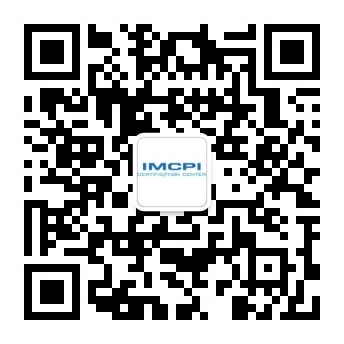
The recent commitment of UN member states to quality in education through the ratification of the Sustainable Development Goals reflects the worldwide concern with opportunity for every child. It’s a welcome initiative, of course; but it raises a challenge. What do we mean by ‘quality’ when it comes to education?
There is an inherent subjectivity in defining the quality of most things, and education is no different. However, government agencies have tended to focus on aspects that can be measured and therefore seen through the layers of bureaucracy. That means that quality has been defined by visible measures, and in education the most common are test scores. Hence quality has become closely bound up with passing tests, a proxy that simplifies and lets us more easily manage the complexities of education delivery.
But it’s a definition of quality that brings tensions. Test results are used not only to measure students; they also bring teachers, schools and governments under the microscope. Funding and other policy decisions often give substantial weight to these measures, which leads to teachers being strongly incentivised towards teaching to the test. The headlines will often tell us this results in a profession of low morale, where accountability to students has been replaced by accountability to bureaucracy. But we can also detect this tension in the dissatisfaction of employers and governments with the general attributes of those entering the workforce, and students increasingly uncertain about their futures.
A recent contribution to this debate is a concept known as the ‘Breadth of Learning Opportunities’, which was first aired in a 2016 paper published by the Learning Metrics Task Force, a global project set up by the UNESCO and the Brookings Institution. The paper recommended that, alongside traditional ‘outcome’ measurements such as numeracy and literacy competence, the global education community needs to introduce an indicator to “track exposure of learning opportunities.”
I recently set out to investigate more about how the idea of a Breadth of Learning Opportunities indicator was being received, in a study involving 27 prominent academics and policy professionals.
The group were generally supportive of the idea that ways of reporting against learning processes in addition to learning outcomes are important; 78% of those I spoke with could be described as enthusiastic for the introduction of an indicator in this area. Many pointed to the potential it would have in correcting the exaggerations of the assessment culture that defines so much of education today. As one respondent put it: “A narrow focus on things we can easily test like literacy and numeracy has negative unintended consequences in practice – in narrowing and distorting teaching-learning processes. An indicator on breadth of learning can counterbalance that.”
We should probably not be surprised that this ‘Breadth of Learning Opportunity’ approach is an attractive one. The evidence of where education is falling short is all around. It seems with every week that goes by, another influential report is bemoaning that schools and universities are failing to produce the young people with the behaviours, skills and knowledge to function effectively in the 21st century world. In particular, employers and governments have been concerned with a perceived lack of creativity and curiosity, and a shortage of communication and team working skills. But if students spend their time being crammed with facts in didactic fashion with the sole purpose of regurgitating them in a test, it’s hardly surprising that many of these behaviours are not cultivated.
The range of learning experiences is important because it enables students to try learning in different ways – not only different subjects, but learning by doing, by reading, by dancing – all sorts of environments and adventures. Students who have a range of experiences, I suggest, are more likely to be able to make better choices on what they want to do next, to do so with greater conviction, and are more likely to seek out new challenges and cope better with change.
The evidence is starting to assemble. But assessments are so interwoven into the machinery of education, and so accepted by society as the norm, that it would take a lot of declogging to switch gears. Assessments may have their drawbacks, but complication tends not to be one. You take a test, you get a score – everyone gets it. But the Breadth of Learning Opportunity is a harder concept to understand, and evidence is needed to support it. Describing this challenge, one of my interviewees argued that “ultimately, what gets measured gets done”. So developing the metrics that prove its impact, and then telling that story so it moves hearts as well as minds, will be key to getting it higher up policy agendas.
最近联合国成员国承诺的质量教育通过批准的可持续发展目标反映了全球关注每一个孩子的机会。这是一个受欢迎的计划,当然,它提出了一个挑战:我们如何理解“质量”在教育中的意思呢?
有一个内在的主观定义的大多数事情一样,质量和教育也不例外。然而,政府机构已经倾向于关注方面,可以测量,因此透过层层官僚机构。这意味着质量被定义为可见的措施,并在教育最常见的考试分数。因此质量已成为密切与通过测试,一个代理,简化并让我们更容易地管理教育传递的复杂性。
但它是一个定义的质量带来的紧张。在显微镜下,测试结果不仅用来衡量学生;他们也带来教师、学校和政府。资金和其他决策经常给这些措施大量的重量,导致教师被强烈激励对教学测试。头条新闻经常会告诉我们这导致士气低落的职业责任,学生一直被问责官僚主义所取代。但我们也可以发现这种紧张关系在雇主和政府的不满的一般属性进入劳动力,和学生对自己的未来越来越不确定。
最近对这场辩论是一个概念被称为“广泛的学习机会”,首次出现在2016年的一篇论文中发表的学习标准工作组,全球项目设立的联合国教科文组织和布鲁金斯学会(Brookings Institution)。论文建议,与传统的“结果”等测量计算和读写能力能力,全球教育社会需要引入一个指标“追踪学习机会的接触。”
我最近着手调查更多关于学习机会的宽度指标的想法被接受,在一项研究中涉及27个著名专家学者和政策。
小组通常支持的想法的方式对学习过程,除了学习成果,报告是重要的。其中78%的人,可以被描述为热情的介绍在这个地区的一个指标。许多指出纠正可能会评估文化的夸张,它定义了今天如此多的教育。正如一位被调查者所说:“一个狭窄的关注我们可以很容易地测试识字和计算能力有负面的意想不到的后果在实践中——在缩小和扭曲的教学过程。一个指标的广度学习可以抗衡。”
我们不应该感到惊讶,这广泛的学习机会的方法是一个有吸引力的一个。教育不足的的证据。似乎每周都与流逝,另一个有影响力的报告哀叹,学校和大学都未能产生行为的年轻人,技能和知识有效函数在21世纪的世界。特别是,雇主和政府关心一个缺乏创造力和好奇心,和缺乏沟通和团队合作能力。但如果学生花时间被塞满了事实以说教的方式与重拾他们的唯一目的测试,不足为怪的是,许多这些行为不是培养。
学习经验的范围是很重要的,因为它使学生努力学习不仅以不同的方式,不同的主题,但在实践中学习,通过阅读,跳舞,各种各样的环境和冒险。学生的经验,我认为,更有可能能够做出更好的选择下一步要做什么,这样做更强,更有可能寻找新的挑战,更好地应对变化。
证据是开始组合。但评估密切融合教育的机械,所以接受社会规范,需要很多declogging开关齿轮。评估可能有它的缺点,但并发症往往不是一个。你考试,你——每个人都得到一个分数。但是学习机会的宽度是一个困难的概念理解,需要和证据来支持它。描述这一挑战时,我的一位受访者说,“最终,要计量的工作最先做好”。所以发展中证明其影响的指标,然后告诉这个故事这心灵和思想,将得到更高的政策议程的关键。
延伸阅读:
自成立以来,IMCPI秉持严谨和规范的培训体系,汇聚对外汉语业界培训名师和专家教授资源,研发出独具特色的对外汉语教学体系。IMCPI吸引了大量外籍中文学习爱好者和外资企业中文培训需求,同时吸引了大批国际对外汉语教学爱好者加入到全球推广汉语的队伍中来。IMCPI被学员誉为对外汉语教育行业的“黄埔军校”。2013年IMCPI荣幸地被国家汉办——孔子学院总部授予国家汉语水平考试考点的资质。

(IMCPI与汉办合作)
另外,IMCPI与培生教育英国认证机构合作。

(上图为培生教育认证获得的权威性和专业性证明文件)
从左往右依次是:英国政府教育与技能部;英国大使馆文化教育处;英国培生集团;英国政府教育与就业部
上海IMCPI 认证中心:4007-200-200
微信号:mariomandarin
IMCPI官网:http://www.cnfirst.org/beststudy.html
报考地址:上海市肇嘉浜路1065号飞雕国际大厦25楼2503-2504室
了解“教老外学中文”的价值和乐趣,欢迎致电:4007-200-200
相关阅读:上海国际汉语教师培训哪家好?
![]()

文中图片来源于网络,如涉嫌侵权请联系处理
想了解更多教老外学中文的信息,可直接拨打:400-200-200



